What is Mosaic Art? Your Ultimate Guide to Timeless Beauty
Ever wondered about mosaic art? Join me on a personal journey through its history, techniques, and vibrant contemporary forms. Discover why this ancient craft still captivates hearts today.
# What is Mosaic Art? A Deep Dive into Tiny Pieces, Grand Visions – From Ancient Wonders to Modern Masterpieces You know, sometimes I look at something incredibly complex, something with immense detail, and I just marvel at how it all comes together. It's like staring at a really intricate painting up close, where you see every brushstroke, every tiny dot, and then you step back, and suddenly, it's a whole world. That's how I often feel about mosaic art. It's a profound experience, really. It’s an art form that speaks to me deeply, probably because my own abstract work often grapples with the idea of disparate elements forming a cohesive, impactful whole. It’s all about intention, isn't it? The deliberate placement of each fragment to create a grand vision, a visual story that transcends time. At its core, **mosaic art** is the art of creating images with small pieces of colored glass, stone, ceramic, or other materials. It's an art form that perfectly embodies the idea that many small parts can create something truly magnificent and enduring. In fact, you could say it's one of the earliest forms of [design in art](/finder/page/what-is-design-in-art), where every element is carefully considered for its contribution to the overall composition. It's about bringing together diverse elements to forge something new, beautiful, and lasting. And that, I think, is a pretty powerful artistic statement. You know, sometimes I look at something incredibly complex, something with immense detail, and I just marvel at how it all comes together. It's like staring at a really intricate painting up close, where you see every brushstroke, every tiny dot, and then you step back, and suddenly, it's a whole world. That's how I often feel about mosaic art. It's a profound experience, really. 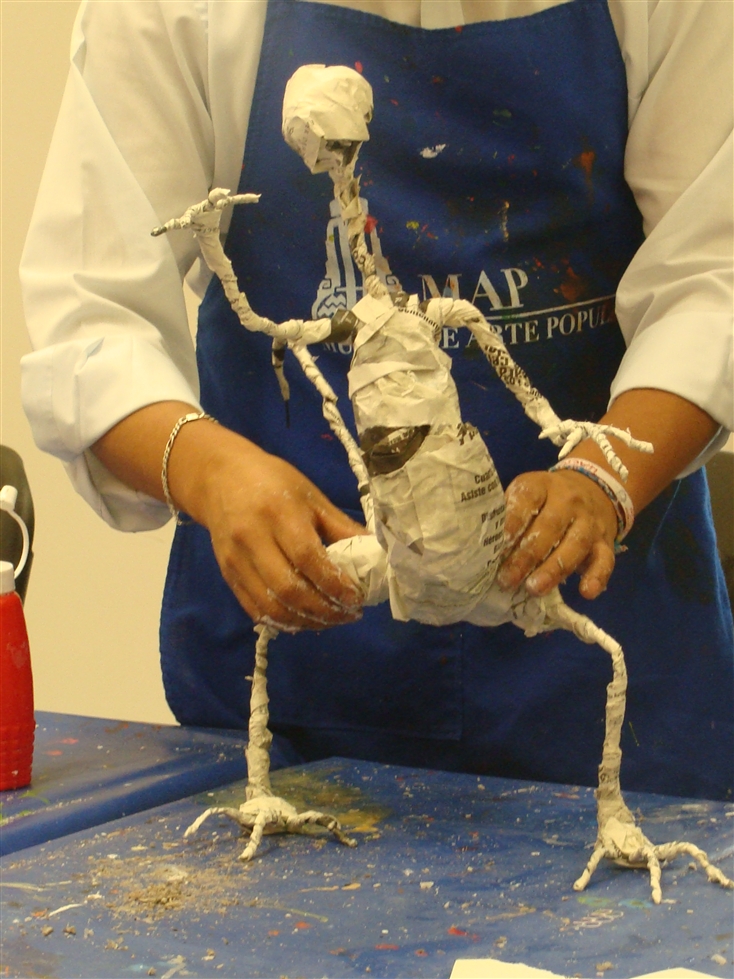 [credit](https://upload.wikimedia.org/wikipedia/commons/f/f9/Alebrijes_Talleres_2MAP.jpg), [licence](https://creativecommons.org/licenses/by/3.0) At its core, **mosaic art** is the art of creating images with small pieces of colored glass, stone, ceramic, or other materials. It's an art form that perfectly embodies the idea that many small parts can create something truly magnificent and enduring. ## The Essence of Mosaic Art: A Symphony of Fragments So, what *is* mosaic art, really? Imagine taking a thousand tiny fragments – shards of glass, pebbles, ceramic bits, even shells – and meticulously placing each one to form a larger picture. Those little fragments are called **tesserae** (or singular, **tessera**). Each tessera is a deliberate choice, a specific color, shape, and texture, all contributing to the overall design. It's a bit like life, isn't it? Every small choice, every tiny interaction, contributes to the bigger picture. My own art often involves similar deliberation, though with paint and canvas rather than stone. But the essence is the same: making something meaningful from individual elements. It's not just about gluing things down; it’s about choosing each piece, understanding its colour, its texture, its shape, and how it will interact with its neighbours. The materials used vary widely, from natural stones and polished marble to vibrant coloured glass and repurposed pottery. This diversity in materials is one of the things I find so captivating; it offers endless possibilities for expression. The sheer range of what can become a tessera – from ancient Roman marble to modern recycled plastics – truly highlights the enduring adaptability of this art form. It's a testament to human creativity, finding beauty in the fragmented and transforming it into a unified whole. ## The Philosophy of Fragmentation: Unity from Disparate Parts For me, the real magic of mosaic art lies in its philosophical underpinnings. It’s a profound meditation on how something grand and coherent can emerge from seemingly insignificant, broken pieces. Think about it: a single tessera is just a chip of material, but when thousands of them are brought together with intention, they form breathtaking landscapes, intricate portraits, and powerful narratives. This idea of unity from fragmentation resonates deeply with my own artistic journey, where I strive to find harmony in bold strokes and diverse textures. 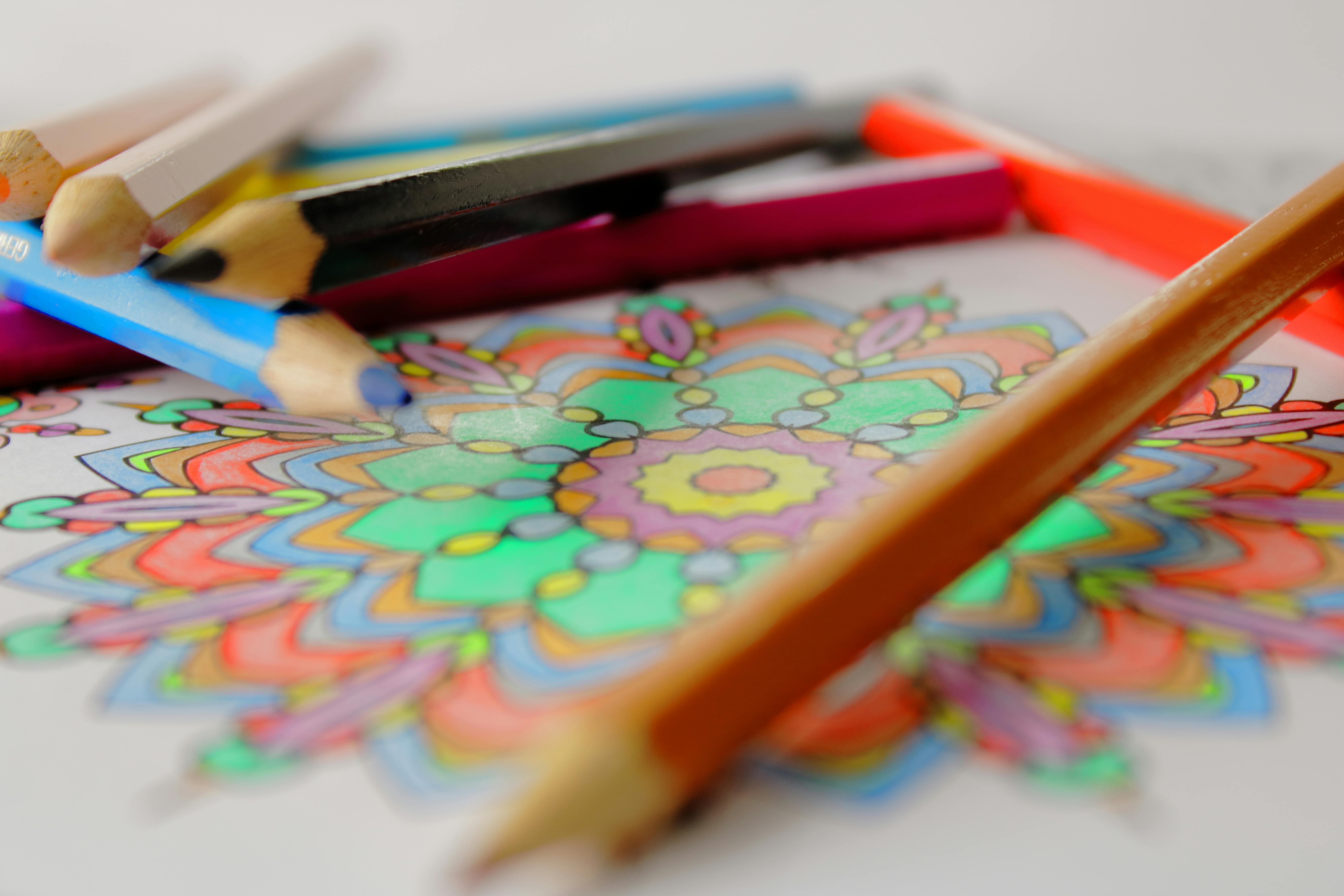 [credit](https://images.pexels.com/photos/5139532/pexels-photo-5139532.jpeg), [licence](https://creativecommons.org/public-domain/) It’s a powerful metaphor for connection, for resilience, and for the incredible beauty that can emerge when fragments come together with intention. This isn't just about aesthetics; it's about the human experience. We, too, are collections of experiences, ideas, and interactions—fragments that, when assembled thoughtfully, create a unique and cohesive identity. It’s a quiet testament to human ingenuity and the enduring desire to create beauty from brokenness. 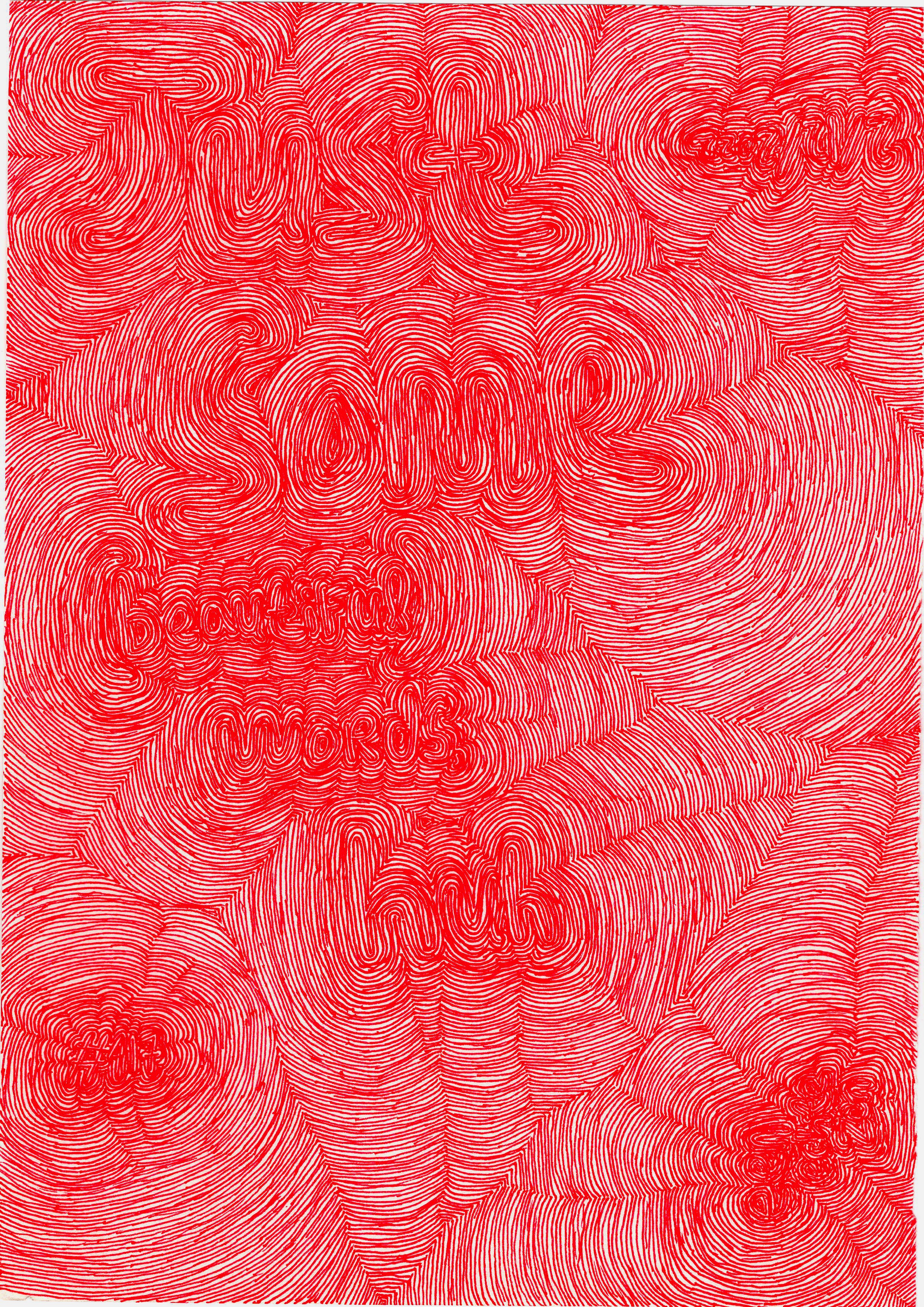 [credit](https://images.zenmuseum.com/art/417/scan.jpeg), [licence](https://creativecommons.org/public-domain/) So, what *is* mosaic art, really? Imagine taking a thousand tiny fragments – shards of glass, pebbles, ceramic bits, even shells – and meticulously placing each one to form a larger picture. Those little fragments are called **tesserae** (or singular, **tessera**). Each tessera is a deliberate choice, a specific color, shape, and texture, all contributing to the overall design. It's a bit like life, isn't it? Every small choice, every tiny interaction, contributes to the bigger picture. It's not just about gluing things down; it’s about choosing each piece, understanding its colour, its texture, its shape, and how it will interact with its neighbours. The materials used vary widely, from natural stones and polished marble to vibrant coloured glass and repurposed pottery. This diversity in materials is one of the things I find so captivating; it offers endless possibilities for expression. 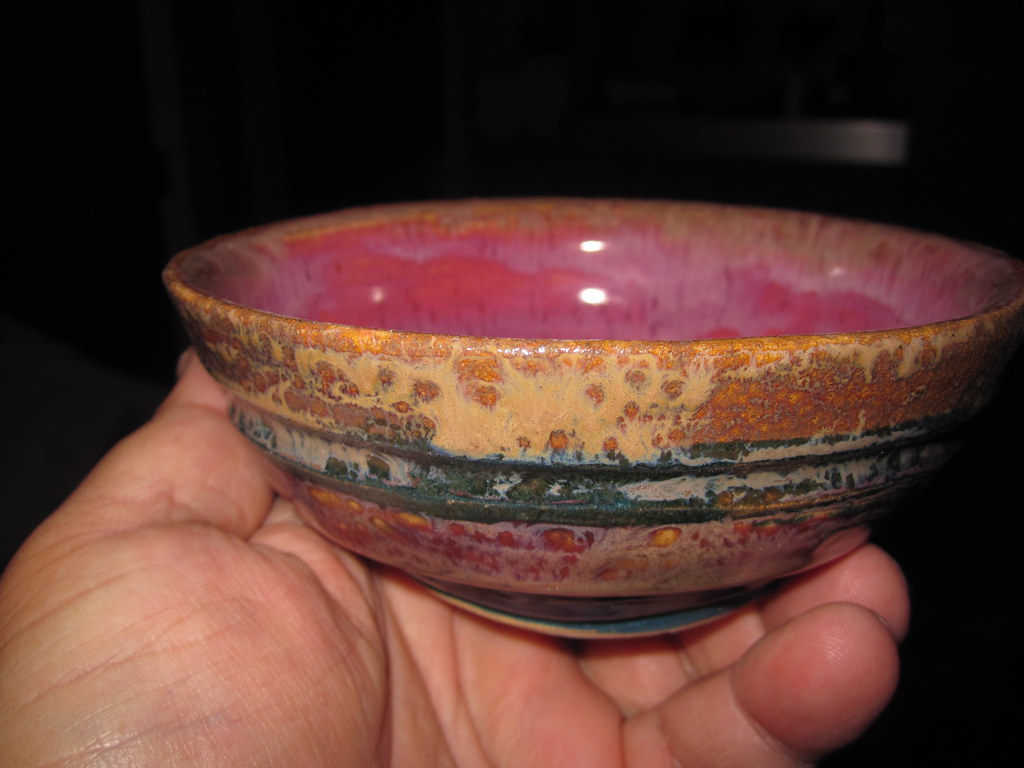 [credit](https://live.staticflickr.com/4142/4925296876_ed063d6fe9_b.jpg), [licence](https://creativecommons.org/licenses/by/2.0/) ## A Journey Through Time: Mosaics Across Civilizations Mosaics aren't some new fad, not by a long shot. This is an art form with deep, deep roots, stretching back thousands of years. I mean, we're talking about something that's seen empires rise and fall, something that has adorned palaces, temples, and everyday homes for millennia. This is an art form with deep, deep roots, stretching back thousands of years. I mean, we're talking about something that's seen empires rise and fall, something that has adorned palaces, temples, and everyday homes for millennia. From the early pebble mosaics of Mesopotamia and ancient Greece, dating back as far as the 3rd millennium BCE in places like Uruk, where cones of colored clay were pushed into wet plaster to create geometric patterns. Then, in ancient Greece, around the 8th century BCE, you see more refined pebble mosaics depicting mythological scenes and geometric designs, often found in courtyards and porticoes. These early forms set the stage, but it really hit its stride in the Roman Empire. Roman villas weren't complete without elaborate mosaic floors and walls, depicting everything from daily life and mythological scenes (like the famous Alexander Mosaic from Pompeii, depicting a battle scene) to incredible geometric patterns. These weren't just decorative; they were often status symbols, telling stories, displaying wealth, and even serving as narrative devices to teach or entertain. The Romans truly elevated the craft, spreading it across their vast empire, leaving a breathtaking legacy that we still admire today.  [credit](https://upload.wikimedia.org/wikipedia/commons/f/f2/Mosaic_floor_with_geometric_and_naturalistic_motifs%2C_Roman_Villa_of_Pis%C3%B5es%2C_Lusitania%2C_Portugal_%2813171062725%29.jpg), [licence](https://creativecommons.org/licenses/by-sa/2.0) ### Mosaics in the Islamic World: A Fusion of Geometry and Spirituality As the Roman Empire waned and new civilizations rose, mosaic art found vibrant expression in the Islamic world, particularly from the 7th century onwards. Here, mosaics evolved with a distinct character, often eschewing figural representations in favor of intricate geometric patterns, floral motifs, and calligraphic inscriptions from the Quran. Places like the Dome of the Rock in Jerusalem, with its dazzling gold and glass mosaics, and the Great Mosque of Damascus, are breathtaking examples. These weren't just decorations; they were profound expressions of religious devotion and architectural grandeur, transforming sacred spaces into shimmering testaments of faith. The precision and complexity of these designs, I think, echo the intricate patterns I sometimes find myself drawn to in my own abstract work, a sense of order emerging from countless deliberate placements. 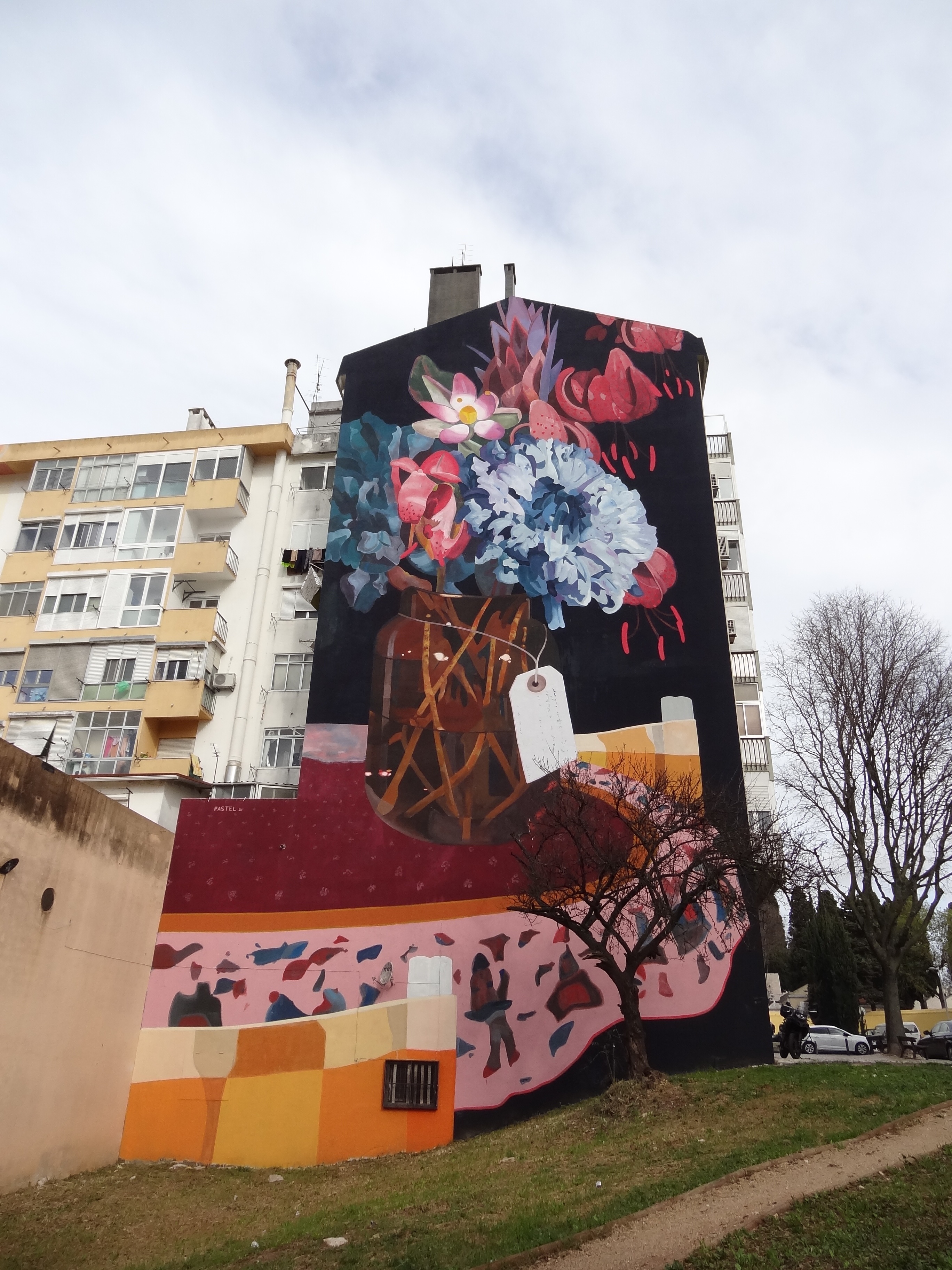 [credit](https://upload.wikimedia.org/wikipedia/commons/5/5a/Mural_L%E1%B8%97th%C4%93_by_Pastel%2C_Lisbon.jpg), [licence](https://creativecommons.org/licenses/by-sa/4.0) Then came the Byzantines, who took mosaics to a whole new level of spiritual grandeur. They used gleaming **smalti** – opaque glass tesserae, often with gold or silver leaf backing – to create breathtaking church interiors that literally shimmered with divine light. If you've ever seen a Byzantine mosaic up close, in places like Ravenna in Italy or the Hagia Sophia in Istanbul, you know what I mean; they truly feel otherworldly, a testament to incredible artistic devotion. The focus shifted to powerful religious iconography, with figures of Christ, the Virgin Mary, and saints adorning vaults and domes, creating a sense of divine presence. It's truly an experience to stand beneath them. If you're curious about other classical art periods and their lasting impact, you might enjoy exploring our guide to [ultimate-guide-to-renaissance-art](/finder/page/ultimate-guide-to-renaissance-art) or diving deeper into [the-influence-of-byzantine-art-on-renaissance-painting](/finder/page/the-influence-of-byzantine-art-on-renaissance-painting). 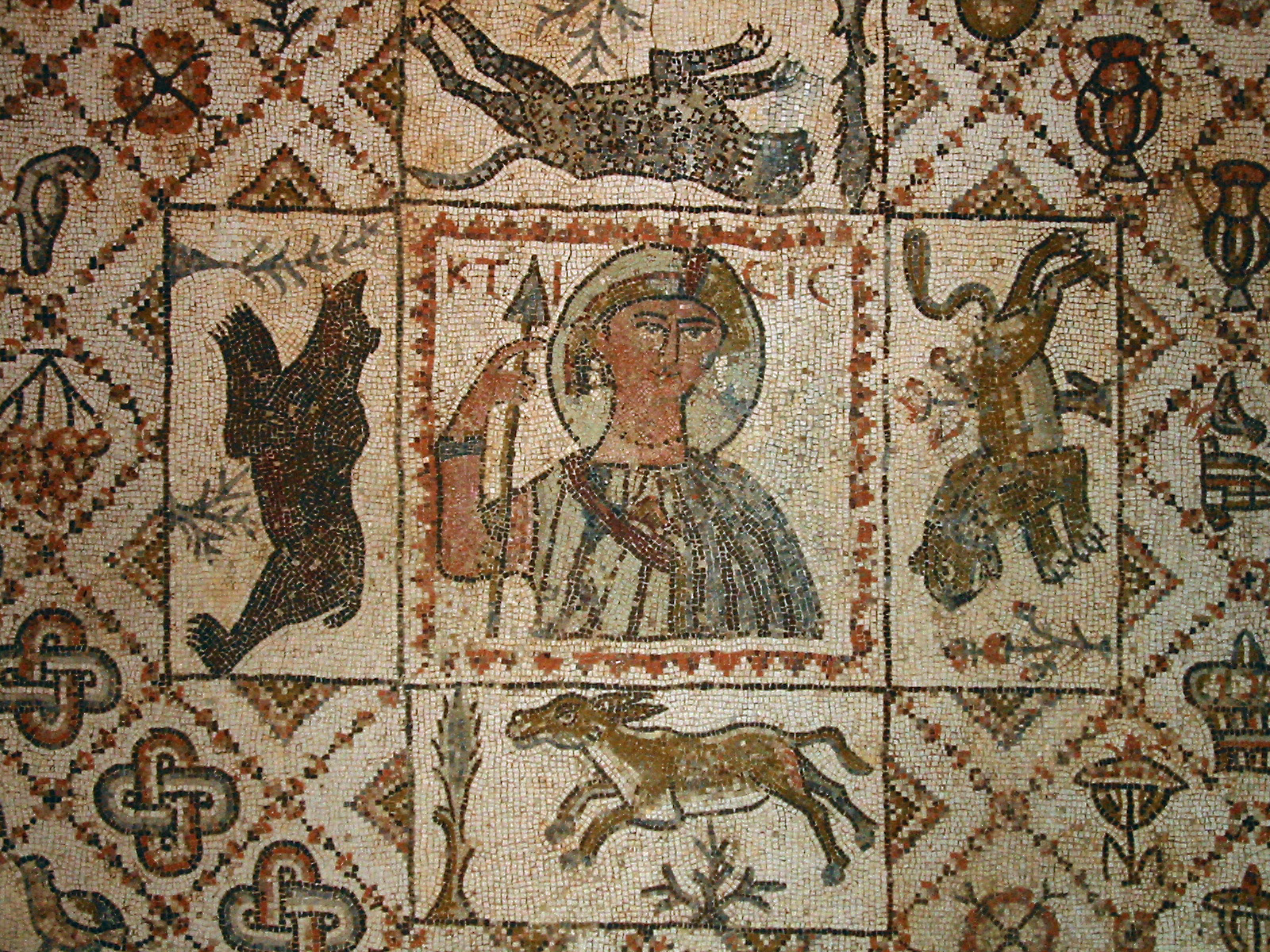 [credit](https://upload.wikimedia.org/wikipedia/commons/9/98/Byzantine_Mosaic_Beiteddine_KTICIC.jpg), [licence](https://creativecommons.org/licenses/by-sa/3.0) The beauty of mosaics is their resilience. They've outlived so much, whispering stories from antiquity. I sometimes wonder what those Roman or Byzantine craftsmen would think if they saw their work still admired today, thousands of years later. It’s a remarkable legacy. While Western Europe saw a decline in mosaic production during the early Medieval or "Dark Ages" – shifting towards fresco painting and tapestry – the tradition continued to flourish in the Byzantine East. Limited examples can still be found in Romanesque churches, but it wasn't until later periods that it saw a resurgence in the West.  [credit](https://www.pexels.com/photo/man-making-art-14377465/), [licence](https://creativecommons.org/public-domain/) ### Renaissance, Baroque, and the Arts & Crafts Revival The Renaissance, surprisingly, saw less emphasis on large-scale mosaic work, with painting and sculpture taking center stage. Mosaics were often seen as a secondary art form, used more for decorative details in cathedrals or small devotional pieces. However, they never truly disappeared. The Baroque period saw some stunning examples, often imitating paintings. But a significant revival came much later, with the **Arts and Crafts Movement** in the late 19th and early 20th centuries. Artists and designers, championing craftsmanship and traditional techniques against industrialization, rediscovered the beauty and honesty of mosaics. This period emphasized natural materials, intricate patterns, and a return to the artisanal approach, reminding us that sometimes, the old ways are truly the best ways. ## Quick History Timeline of Mosaics | Era/Movement | Key Characteristics | Notable Examples | | :------------------ | :---------------------------------------------------------- | :------------------------------------------------------------ | | Ancient Mesopotamia | Earliest forms, clay cones, geometric patterns | Uruk (3rd millennium BCE) | | Ancient Greece | Pebble mosaics, mythological/geometric designs | Olynthos, Pella (4th century BCE) | | Roman Empire | Elaborate floors/walls, daily life, mythology, status symbols | Pompeii, Ostia, Villa Romana del Casale | | Byzantine Empire | Spiritual grandeur, gold smalti, religious iconography | Ravenna (San Vitale), Hagia Sophia (Istanbul) | | Islamic Golden Age | Geometric, floral, calligraphic, non-figural | Dome of the Rock (Jerusalem), Great Mosque of Damascus | | Medieval Europe | Decline in West, continued in Byzantium | Limited use in Romanesque churches | | Renaissance/Baroque | Less prominent, decorative details, painting imitation | St. Peter's Basilica (Vatican) | | Arts & Crafts | Revival of craftsmanship, natural materials, artisanal | Works by William Morris, Tiffany Studios | | Modern/Contemporary | Experimentation, new materials, public art, abstract | Antoni Gaudí (Park Güell), contemporary public installations | 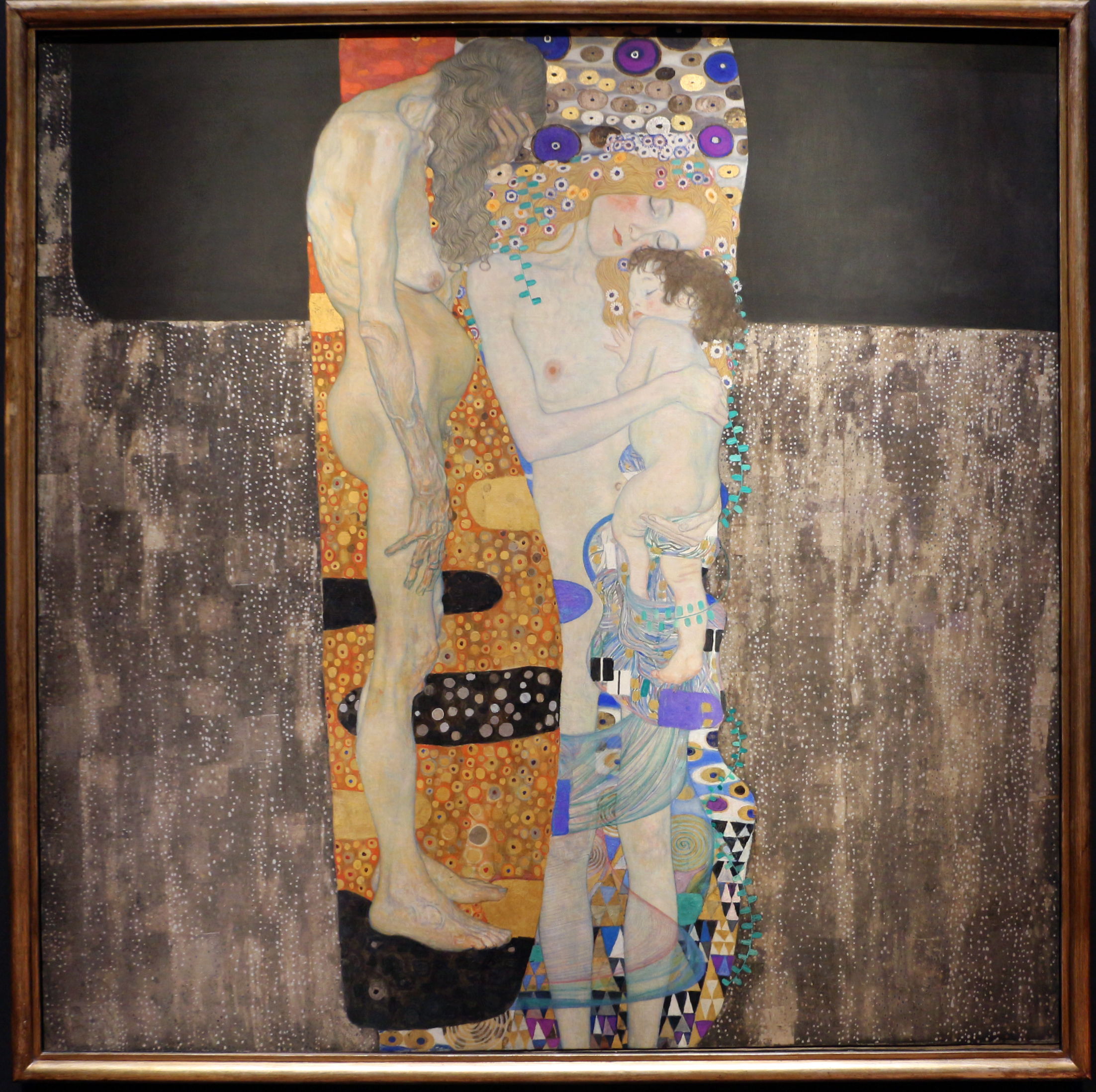 [credit](https://upload.wikimedia.org/wikipedia/commons/7/78/Gustav_klimt%2C_le_tre_et%C3%A0%2C_1905%2C_01.jpg), [licence](https://creativecommons.org/licenses/by-sa/4.0) ## The Global Reach of Mosaic Art: Beyond Europe and the Middle East It’s easy to focus on the European and Middle Eastern traditions, given their immense historical impact, but mosaic art is a truly global phenomenon. From the intricate beadwork of indigenous African cultures to the vibrant tile work of Latin American artists, the impulse to create images from small, discrete parts seems to be a universal human trait. In Mexico, for instance, pre-Hispanic cultures used turquoise and shell mosaics for ceremonial masks and adornments, showcasing a unique aesthetic and material palette. And in more contemporary settings, you see communities around the world embracing mosaic as a form of public art and expression, transforming urban landscapes with collaborative, colorful projects. It reminds me that art, in its purest form, transcends borders and speaks a universal language of creativity and connection. 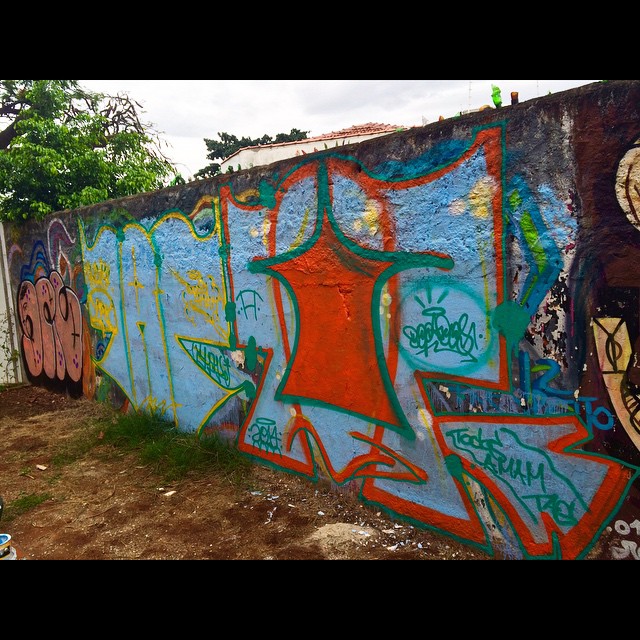 [credit](https://upload.wikimedia.org/wikipedia/commons/e/e3/Street_Art_S%C3%A3o_Paulo.jpg), [licence](https://creativecommons.org/licenses/by-sa/4.0) ## Techniques and the Language of Tesserae ## Techniques and the Language of Tesserae Before we dive into the nitty-gritty, let's establish some core vocabulary. Understanding these terms will help you appreciate the intricate work involved, and maybe even inspire you to try your hand at it! ### Key Terms in Mosaic Art | Term | Definition | Significance | | :------------- | :------------------------------------------------------------------------------------------------------ | :------------------------------------------------------------------------------------------------------------ | | **Tessera** | A small piece of material (stone, glass, ceramic, etc.) used to create a mosaic. | The fundamental building block of any mosaic. | | **Smalti** | Opaque glass tesserae, often with gold/silver leaf backing, known for their vibrant color and shimmer. | Predominant in Byzantine mosaics, creating luminous, spiritual effects. | | **Andamento** | The flow or direction in which the tesserae are laid. | Dictates movement, texture, and emotional impact, guiding the viewer's eye. | | **Opus** | Latin term referring to the style or pattern of tesserae arrangement. | Defines the overall visual texture and detail level of a mosaic. | | **Substrate** | The underlying surface to which the tesserae are adhered. | Crucial for durability; must be stable and suitable for the environment. | | **Adhesive** | The material used to bind tesserae to the substrate. | Choice depends on materials, environment, and desired permanence (e.g., mortar, glue). | | **Grout** | A cement-based or epoxy filler used to fill the spaces between tesserae. | Protects the mosaic, adds structural integrity, and enhances the visual contrast or unity. | | **Nippers** | Specialized tools for cutting and shaping tesserae. | Essential for creating custom shapes and fitting pieces precisely. You might think placing tiles is simple, but there's a real language to it, a rhythm. The way the tesserae are laid, their **andamento**, is crucial. It dictates the movement, the texture, and even the emotional impact of the piece. It's like the brushwork in a painting; it adds character and life, guiding the viewer's eye through the composition. For instance, **Opus Undulatum** uses wavy lines to evoke water, while radiating lines can draw attention to a central figure. It’s a subtle yet powerful technique, akin to how I consider [understanding balance in art composition](/finder/page/understanding-balance-in-art-composition) in my own paintings; every element contributes to the overall visual harmony.  [credit](https://images.pexels.com/photos/7859311/pexels-photo-7859311.jpeg), [licence](https://creativecommons.org/public-domain/) Different eras and cultures developed specific *opus* styles, which basically refers to how the tesserae are cut and arranged. It's truly fascinating to see how the choice of arrangement can completely alter the character of a piece. ### Understanding the *Opus* Styles: A Mosaic Lexicon | Opus Style | Description | Common Use | Example Impression | | :-------------------- | :------------------------------------------------------------------------------------------------------ | :---------------------------------------------------------------------------- | :-------------------------------------------------------- | | **Opus Tessellatum** | Larger tesserae (4mm+) laid in a regular, grid-like pattern. | Floors, large decorative panels. | Robust, geometric, orderly. | | **Opus Vermiculatum** | Tiny tesserae (often <4mm) following the contours of a figure or design, creating fine detail. | Figurative scenes, central emblems, painterly effects. | Intricate, delicate, lifelike. | | **Opus Sectile** | Large, irregularly shaped pieces of stone or marble cut to fit precisely together, forming patterns. | Floors, wall panels, architectural decoration. | Grand, luxurious, often abstract or geometric. | | **Opus Musivum** | General term for wall mosaics, often using smaller, more varied tesserae than floor mosaics. | Wall decorations, vaulted ceilings. | Rich, detailed, visually complex. | | **Opus Regulatum** | Tesserae laid in parallel rows, often creating a striped or banded effect. | Backgrounds, borders, architectural elements. | Uniform, linear, rhythmic. | | **Opus Figlinum** | Mosaics made with ceramic tiles, often broken shards or pottery fragments. | Less formal, often for outdoor or folk art mosaics. | Rustic, vibrant, resourceful. |  [credit](https://freerangestock.com/photos/152787/a-colorful-graffiti-on-a-building.html), [licence](https://creativecommons.org/publicdomain/zero/1.0/) Imagine the patience required for something like **Opus Vermiculatum**! Sometimes less than a millimeter for each piece! It makes my own attempts at intricate detail feel a bit clumsy by comparison, I must admit. But this array of styles really shows how versatile the art form is, allowing artists to achieve everything from broad, sweeping patterns to incredibly delicate, painterly details. 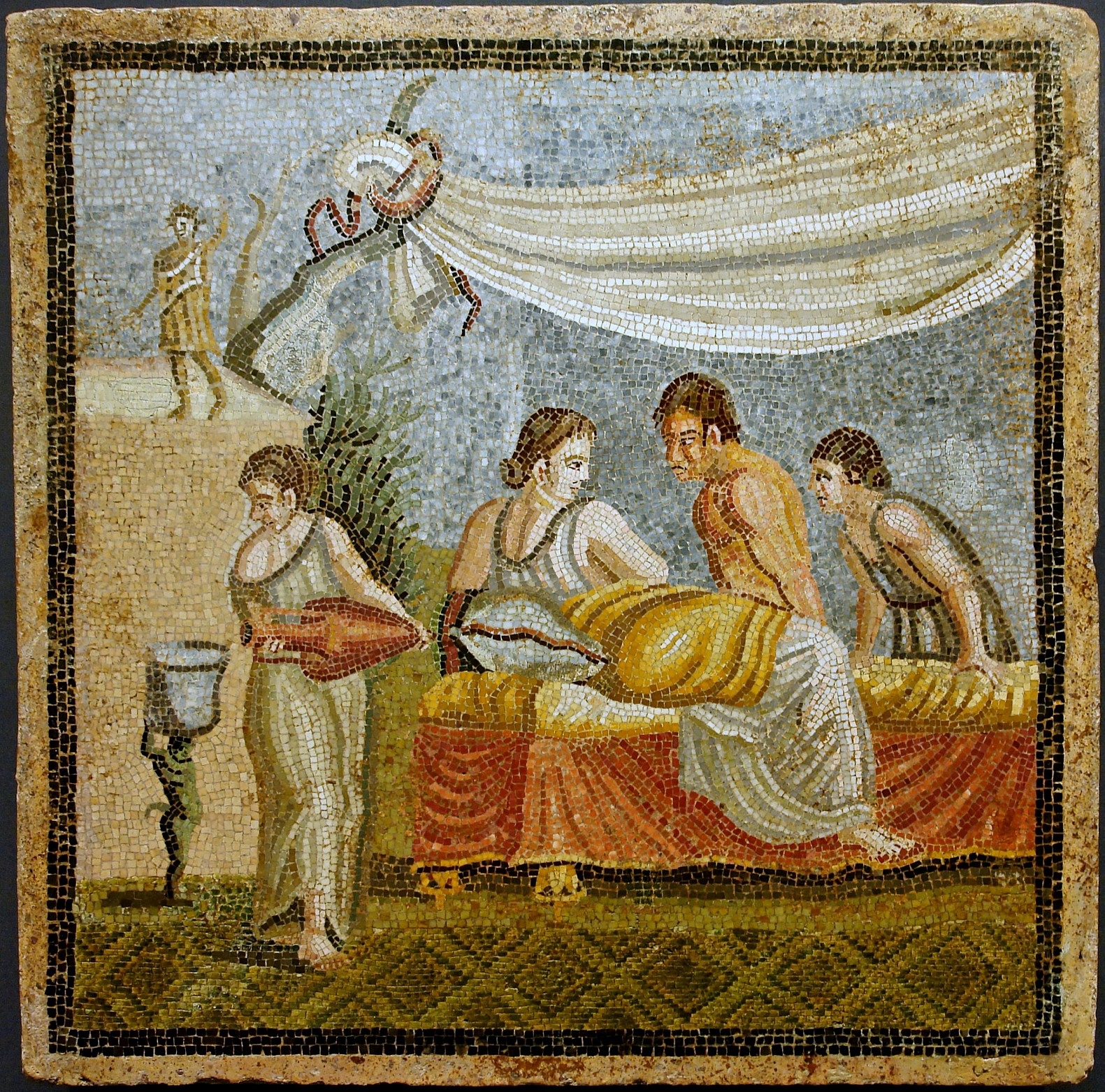 [credit](https://upload.wikimedia.org/wikipedia/commons/f/fe/Roman_mosaic-_Love_Scene_-_Centocelle_-_Rome_-_KHM_-_Vienna.jpg), [licence](https://creativecommons.org/licenses/by-sa/2.5) ### Direct vs. Indirect Method: Two Paths to a Masterpiece When it comes to actually constructing a mosaic, artists generally choose between two primary approaches: the direct method and the indirect method. Each has its own advantages and challenges, and the choice often depends on the scale, complexity, and intended location of the final artwork. | Method | Description | Pros | Cons | Best Suited For | | :----------- | :---------------------------------------------------------------------------------------------------------------------------------------------------------------------------------------------------------------------- | :------------------------------------------------------------------------------------------------------ | :-------------------------------------------------------------------------------------------------------------------------------------- | :---------------------------------------------------------------------------------- | | **Direct** | Tesserae are applied directly to the final substrate, one piece at a time. The artist works on the actual surface that will be displayed. | Immediate visual feedback, allows for spontaneity, texture variations are easily achieved. | Less control over uniformity, difficult for very large projects or off-site work, cannot see entire design if working in sections. | Small to medium projects, textured surfaces, murals, outdoor pieces. | | **Indirect** | Tesserae are glued face-down onto a temporary backing (like paper or mesh) in sections. Once complete, the sections are transferred to the final substrate and then the temporary backing is removed. | Allows for precise control and uniformity, ideal for large installations or architectural projects, can be done off-site. | Reverse image initially, texture is often flatter, requires careful alignment during transfer, two-step process. | Large-scale floor mosaics, prefabrication for architectural installations, smooth surfaces. | I’ve tried both, and I have to say, the direct method feels more immediate and personal, more like a dialogue with the materials. But for truly monumental works, the indirect method is an absolute game-changer, allowing for a level of precision that would be almost impossible otherwise. It's all about choosing the right tools for the right job, isn't it? ## Why Mosaics Endure: More Than Just Pretty Pieces So, why has this art form persisted for so long? Beyond the sheer beauty, I think it comes down to a few things. First, **durability**. Stone and glass are tough; they withstand the test of time, weathering centuries with grace. Many ancient mosaics are still vibrant today, a testament to their robust nature. Second, **storytelling**. From epic myths to religious narratives, mosaics have always been powerful visual communicators. They draw you in, piece by tiny piece, until the full narrative unfolds. It’s a compelling way to convey complex ideas without words. This narrative power is something I constantly think about in my own art, even when working with abstract forms—how to convey emotion and meaning without explicit representation. Third, **accessibility**. While mastering the art of mosaic is a lifetime pursuit, the basic principles are surprisingly accessible. You don't need years of art school to start playing with tesserae and creating something beautiful. It’s an art form that invites participation, which I find incredibly democratic and refreshing. 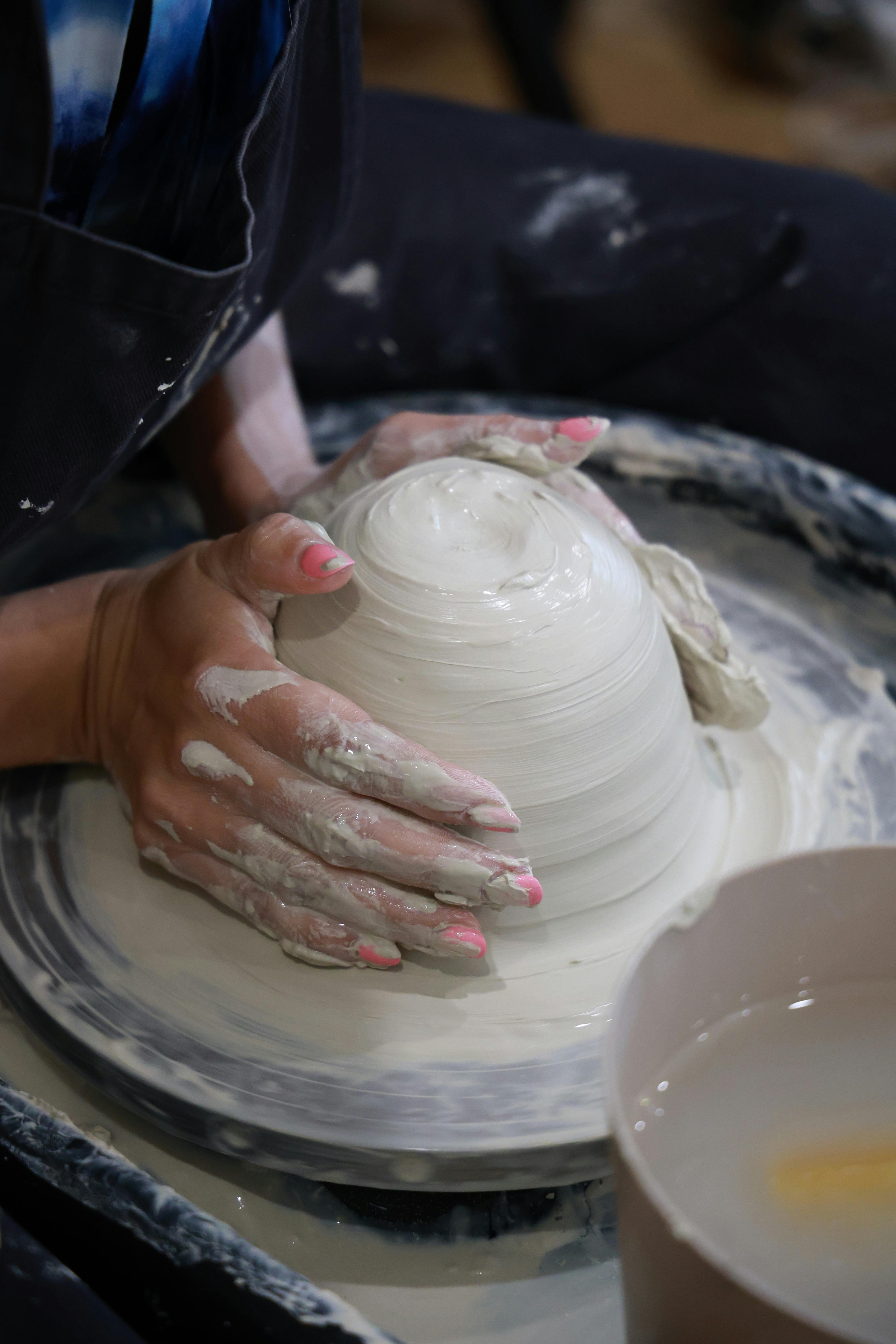 [credit](https://images.pexels.com/photos/27682065/pexels-photo-27682065.jpeg?cs=srgb&dl=pexels-dmitry-ovsyannikov-271243380-27682065.jpg&fm=jpg), [licence](https://creativecommons.org/public-domain/) And for me, as an artist drawn to the abstract and the expressive, there's something profound about taking disparate elements and forcing them into a harmonious whole. It mirrors my own process of finding patterns and emotions in bold colors and shapes, much like the pieces you can explore and [buy](/buy) on my site. This inherent quality of assembly, of making a coherent statement from fragments, gives mosaics a timeless appeal. Fourth, **versatility**. Mosaics aren't confined to a single material or scale. They can be microscopic in detail or span entire building facades. They can be rough and rustic or polished to a gleaming finish. This incredible adaptability means mosaics have found a place in every era and every culture, constantly reinventing themselves while retaining their core identity. ## Mosaic Restoration and Preservation: Guarding Ancient Legacies The durability of mosaics means many ancient examples have survived, but time and neglect can still take their toll. That's where the crucial work of mosaic restoration and preservation comes in. It's a highly specialized field, requiring not only artistic sensitivity but also archaeological knowledge and scientific precision. Conservators meticulously clean, repair, and stabilize ancient mosaics, often replacing missing tesserae with new ones carefully matched in color and material, or sometimes deliberately differentiated to mark modern intervention. It's a delicate dance between historical authenticity and practical repair, ensuring these fragmented masterpieces continue to whisper their stories for generations to come. It’s a bit like an art doctor, isn't it, mending the wounds of time?  [credit](https://commons.wikimedia.org/wiki/File:Screen_printing_at_NTAS.jpg), [licence](https://creativecommons.org/licenses/by-sa/4.0) ## Mosaic as Therapy and Community Art: Healing Through Fragments Beyond their aesthetic and historical significance, mosaics also offer profound therapeutic benefits and serve as powerful tools for community building. The meditative process of selecting, cutting, and placing each tessera can be incredibly calming, reducing stress and fostering mindfulness. It's a hands-on activity that encourages focus and patience, almost like a form of active meditation. I can attest to the calming rhythm it creates, a bit like the flow state I get into when I'm deep in a painting. For communities, large-scale mosaic projects become collaborative endeavors, bringing people together, fostering shared pride, and beautifying public spaces. These projects often tell local stories, celebrate cultural identity, or address social issues, proving that art isn't just for galleries, it's for everyone, and it can truly transform lives. I just love that connection, don't you? ## Crafting Your Own Mosaic: A Hands-On Journey (or Just a Dream!) Okay, so maybe I've got you dreaming about making your own mosaic now. I know I often do! It's an art form that feels incredibly accessible, even if mastering it is a lifetime pursuit. It really is a fantastic creative outlet, allowing you to transform everyday objects into something truly special. I sometimes find myself staring at a broken plate or a pile of colourful stones and wondering what new form they could take. The possibilities are endless, and that's what makes it so exciting! You really don't need a grand Roman villa to start – just a desire to create and a few basic supplies. 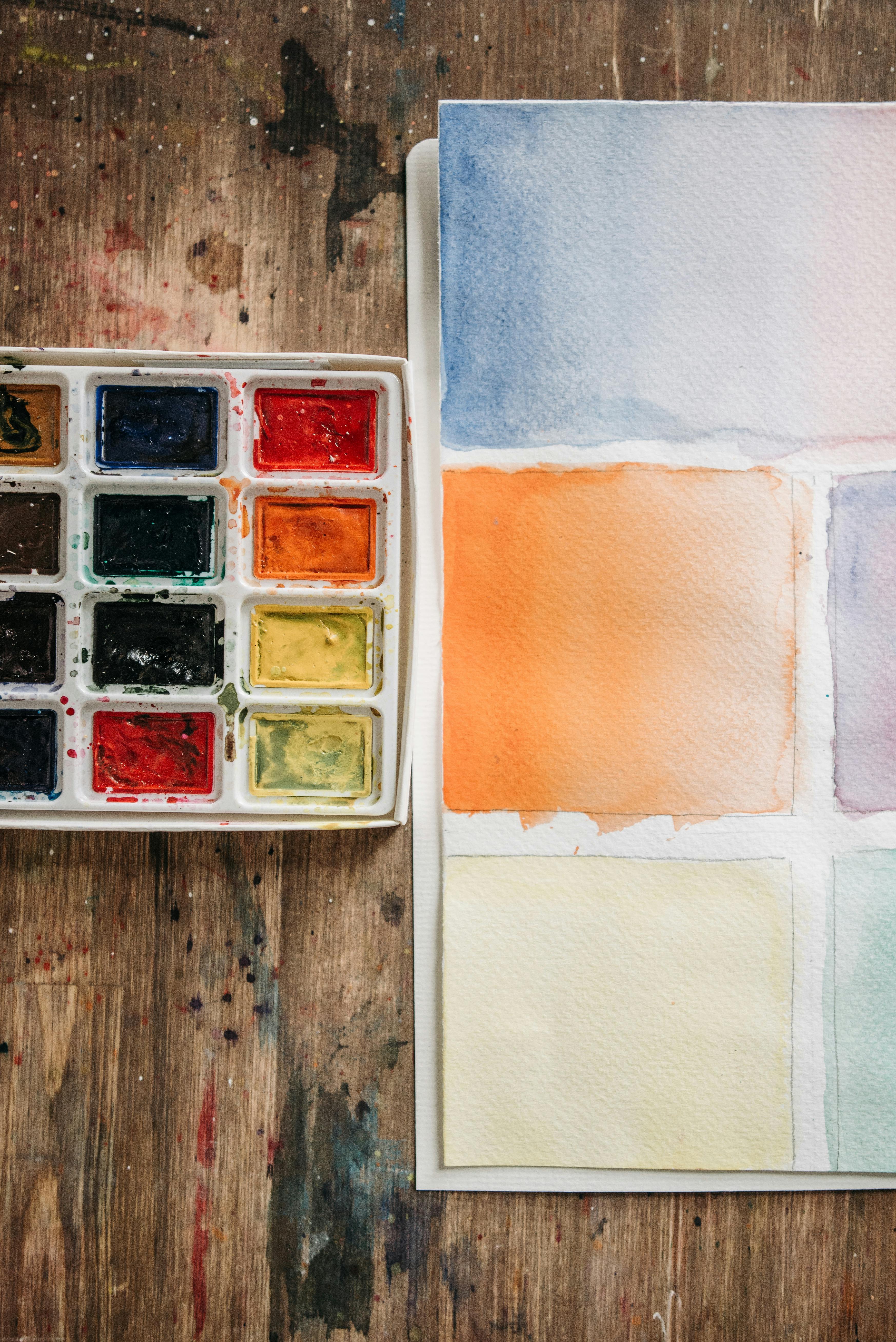 [credit](https://images.pexels.com/photos/6925017/pexels-photo-6925017.jpeg), [licence](https://creativecommons.org/public-domain/) ### Essential Materials and Tools for Your First Mosaic You don't need a grand Roman villa to start. Seriously, the barrier to entry is quite low, which is part of its charm! Here’s a basic rundown of what you’ll need: 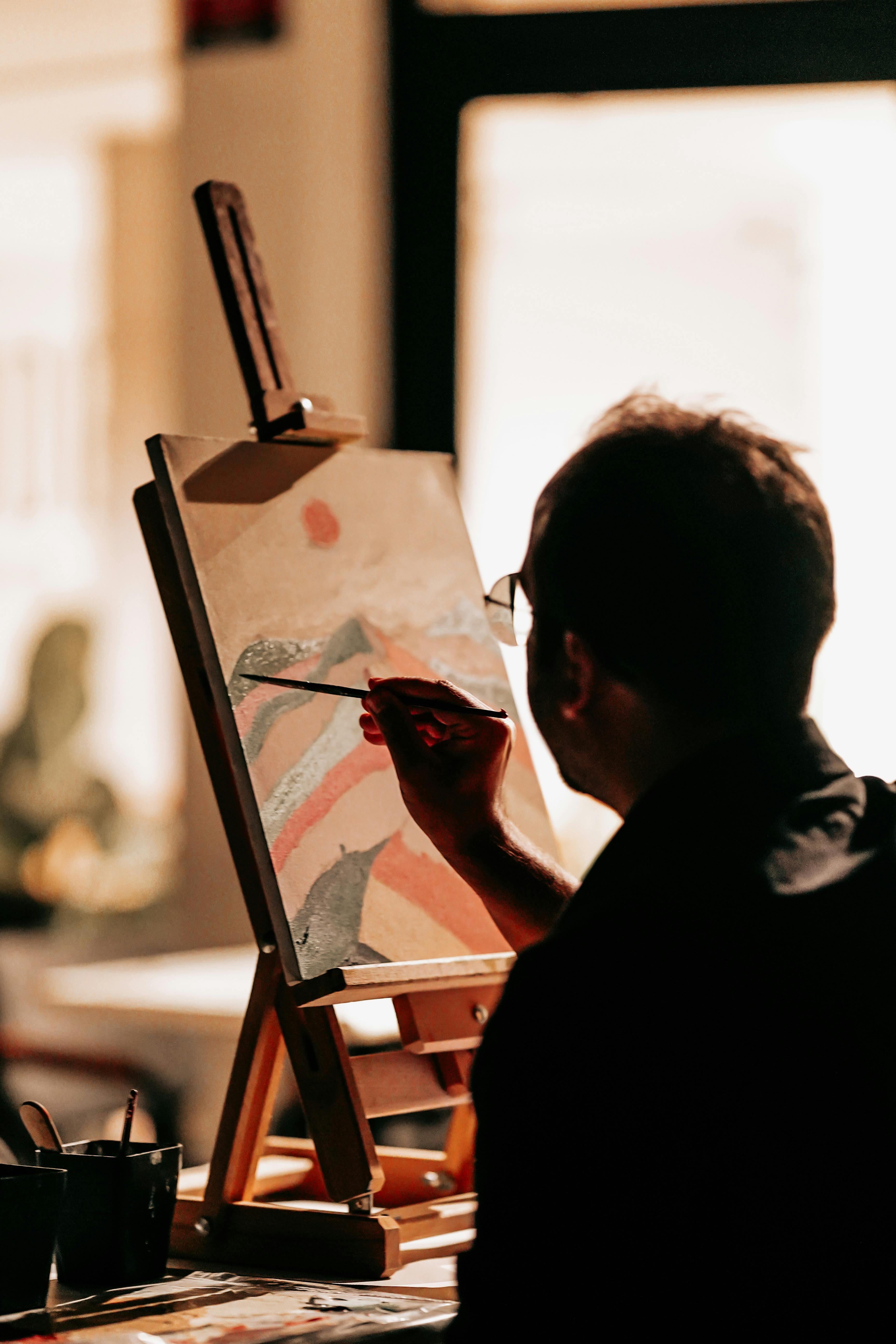 [credit](https://images.pexels.com/photos/18516626/pexels-photo-18516626/free-photo-of-man-painting-a-landscape.jpeg), [licence](https://creativecommons.org/public-domain/) * **Substrate**: This is your base. A small piece of plywood, cement board, terracotta pot, or even a sturdy old tray works well. It needs to be rigid and suitable for adhering tesserae. * **Tesserae**: These are your mosaic pieces. You can buy purpose-made glass or ceramic tesserae, or go the wonderfully sustainable route and use old broken tiles, crockery, seashells, pebbles, or even costume jewelry. Get creative! * **Adhesive**: This is what binds your tesserae to the substrate. For smaller, indoor projects, a strong craft glue (like PVA or E6000) can work. For more durable, outdoor, or larger projects, thin-set mortar or tile adhesive is best. * **Grout**: This fills the gaps between your tesserae, protecting the mosaic and giving it a finished look. Sanded grout is generally used for wider gaps, while unsanded grout is for very narrow ones. * **Wheeled Nippers**: These are a game-changer for shaping and cutting your tesserae, especially glass and ceramic tiles. They provide a clean break and allow for more intricate shaping than hammers. * **Safety Glasses**: Absolutely essential when cutting tesserae! Shards can fly, and eye protection is non-negotiable. * **Spatula/Trowel**: For spreading adhesive and grout. * **Sponge & Buckets**: For cleaning off excess grout. * **Old Cloths/Rags**: Always handy for cleanup. My advice? Start small, embrace imperfections, and let the materials guide you. Sometimes the most beautiful 'mistakes' are the ones you didn't plan for – they add character and a unique story to your piece. ### Basic Mosaic Process: A Step-by-Step Guide Ready to get your hands dirty? Here's a simplified process to get you started: 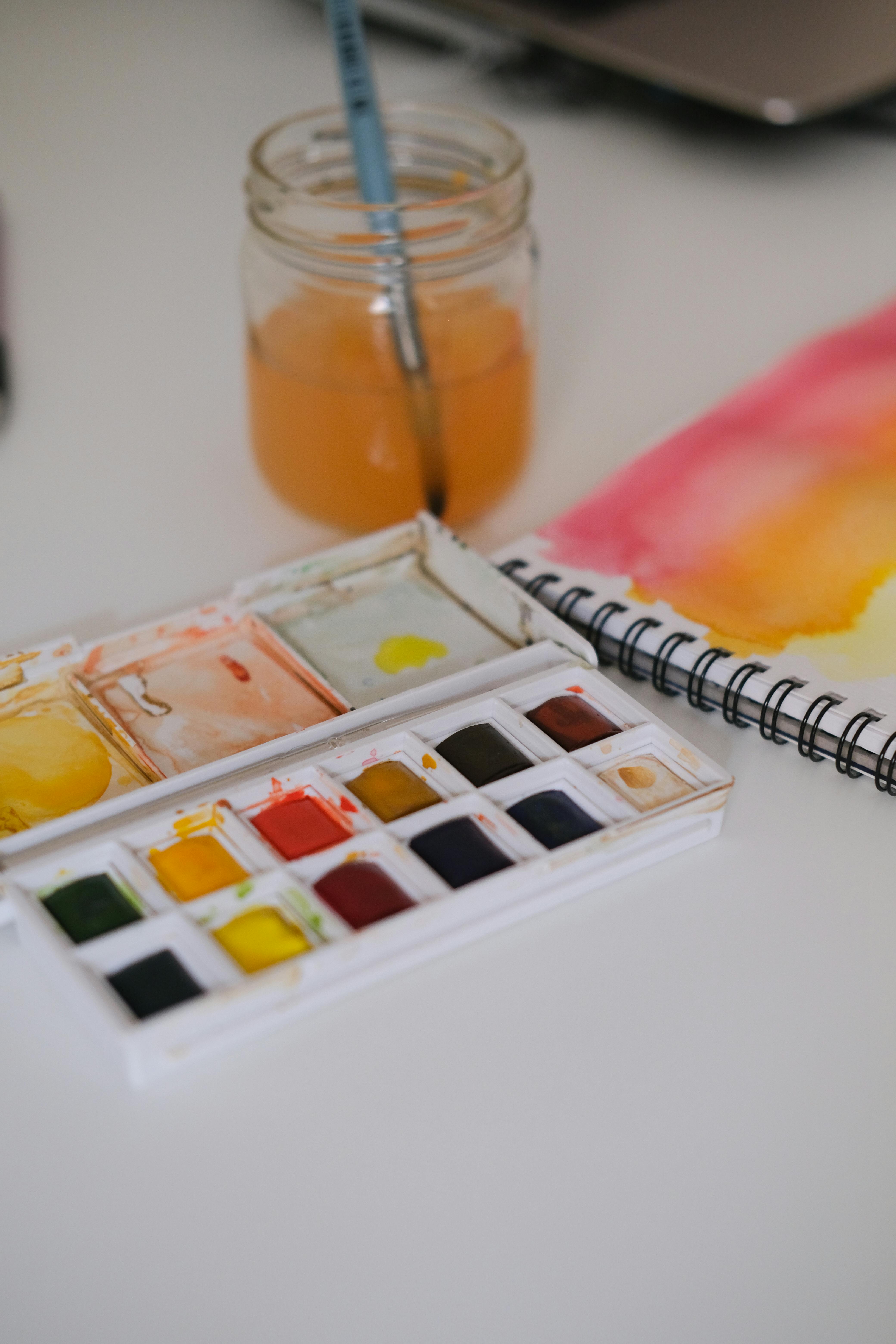 [credit](https://images.pexels.com/photos/13600524/pexels-photo-13600524.jpeg), [licence](https://creativecommons.org/public-domain/) 1. **Design Your Mosaic**: Sketch your design onto your chosen substrate. Keep it simple for your first project! Think about colors and how your tesserae will fit together. 2. **Prepare Your Tesserae**: Gather your materials. If using broken tiles or glass, carefully cut or break them into manageable pieces using your nippers. Remember those safety glasses! 3. **Apply Adhesive**: Working in small sections, spread a thin layer of adhesive onto your substrate. 4. **Place Tesserae**: Carefully place your tesserae onto the adhesive, following your design. Pay attention to the **andamento** (the flow of the pieces) to enhance your design. Leave small, even gaps between pieces for the grout. 5. **Let it Cure**: Allow the adhesive to dry completely according to the manufacturer's instructions. This is crucial before grouting. 6. **Apply Grout**: Once the adhesive is dry, mix your grout (if using powdered form) and spread it over the entire mosaic, pressing it into all the gaps with a rubber spatula or trowel. Ensure all spaces are filled. 7. **Clean Excess Grout**: After a short waiting period (check grout instructions, usually 15-30 minutes), gently wipe off the excess grout from the surface of the tesserae with a damp sponge. Rinse your sponge frequently. 8. **Final Polish**: Once the grout has set and dried (usually 24-48 hours), buff the mosaic with a clean, dry cloth to remove any haze. Voilà! You’ve made a mosaic! It’s really quite satisfying to see your vision come to life, piece by tiny piece.  [credit](https://www.pexels.com/photo/creative-art-studio-with-brushes-and-paints-29589096/), [licence](https://creativecommons.org/public-domain/) ### Safety First: Working with Mosaics Responsibly While mosaic art is incredibly rewarding, it does involve working with sharp materials and various chemicals, so a bit of caution goes a long way. Always, and I mean *always*, wear **safety glasses** when cutting or breaking tesserae. Small shards can fly, and protecting your eyes is paramount. If you're using thin-set mortar or grout, consider wearing gloves to protect your skin, as these materials can be irritating. Work in a well-ventilated area, especially if you're using strong adhesives or mixing powdered grout. And finally, keep your workspace tidy; stray tesserae on the floor are a trip hazard! A little planning makes for a much more enjoyable and safe creative experience, trust me. 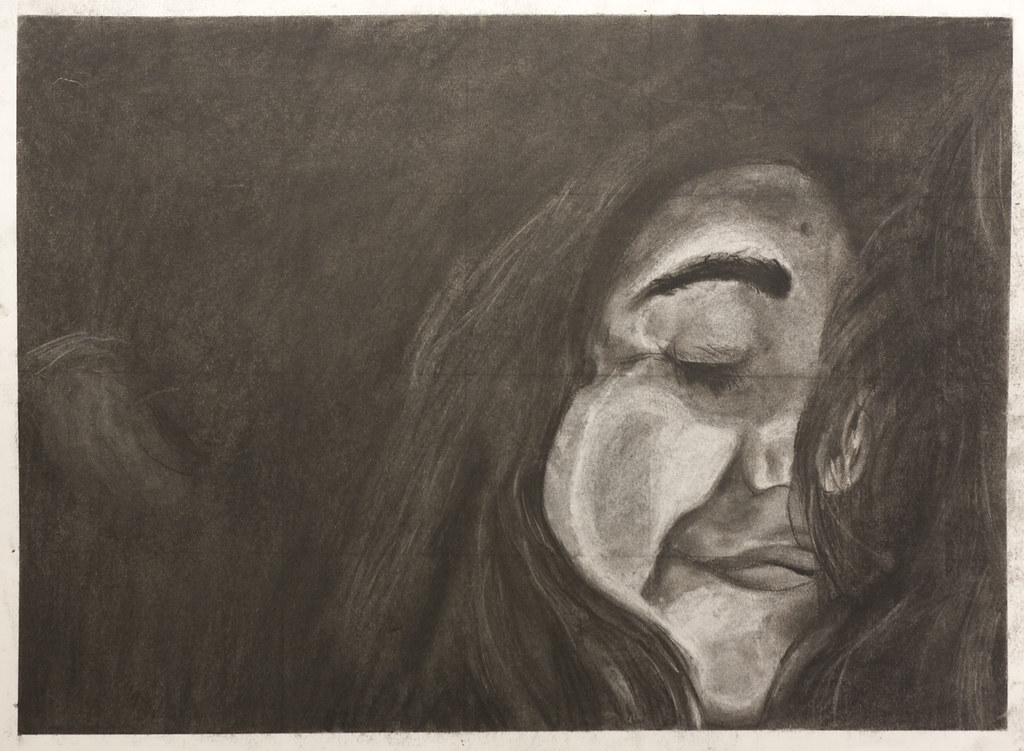 [credit](https://live.staticflickr.com/4146/5079854007_47a6d2f481_b.jpg), [licence](https://creativecommons.org/licenses/by/2.0/) ## Mosaics in the Contemporary Art Landscape: Breaking the Mold Today, mosaic art is far from being stuck in the past. Contemporary artists are pushing boundaries, using new materials, and exploring abstract forms that challenge our perceptions. This evolution is fascinating, connecting an ancient medium to modern sensibilities. 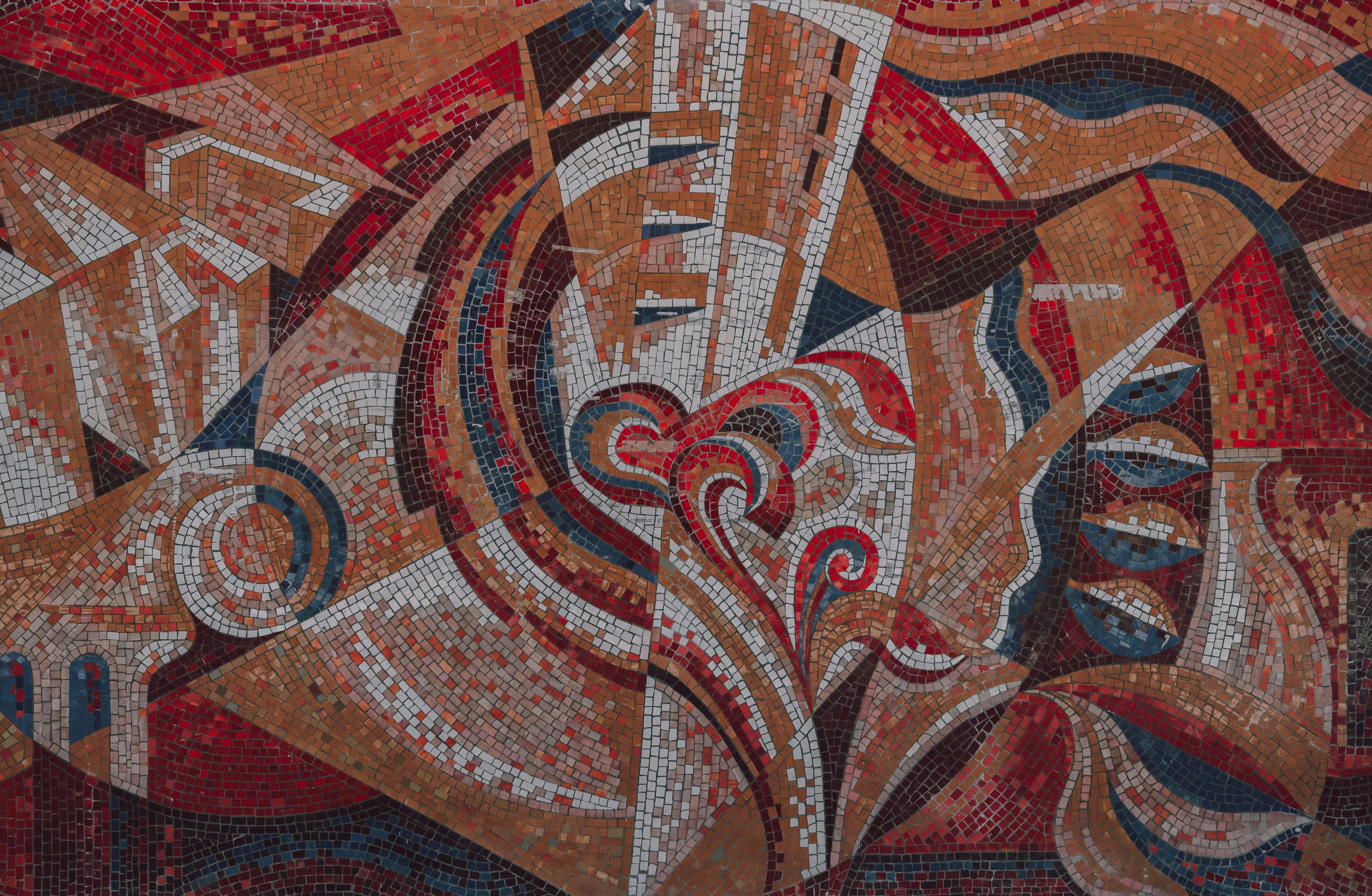 credit, [licence](https://creativecommons.org/public-domain/) You see it in vibrant public art installations, in avant-garde gallery pieces, and even in digital interpretations. It’s a testament to the versatility of the medium. The idea of constructing a whole from many parts deeply resonates with the modern art spirit, often echoing the fragmented nature of our own experiences. If you're interested in how art movements adapt and evolve, take a look at our [the-definitive-guide-to-the-history-of-abstract-art-key-movements-artists-and-evolution](/finder/page/the-definitive-guide-to-the-history-of-abstract-art-key-movements-artists-and-evolution). Even iconic images find new life in mosaic form, demonstrating the endless reinterpretations possible. Just look at how the Mona Lisa can be reimagined with tesserae, creating a whole new textural and visual experience. This ability to recontextualize and reinterpret is, I think, one of the most powerful aspects of art, allowing familiar narratives to be seen through fresh eyes. ### Mosaic in Digital Art and AI: A New Frontier of Fragmentation It’s fascinating to consider how this ancient art form is finding new interpretations in the digital age. We're seeing artists create "digital mosaics" using pixels as their tesserae, or even employing algorithms to generate complex, mosaic-like patterns. And with the rise of AI, there's an emerging space for artificial intelligences to experiment with fragmented imagery, generating compositions that echo the principles of mosaic art. While I approach AI art with a healthy dose of skepticism – I believe the human touch, the deliberate choice of each tessera, is what truly gives a mosaic its soul – it’s undeniable that technology offers new avenues for exploring the idea of creating a whole from countless parts. It's a conversation worth having, about where the line is between human ingenuity and digital replication. 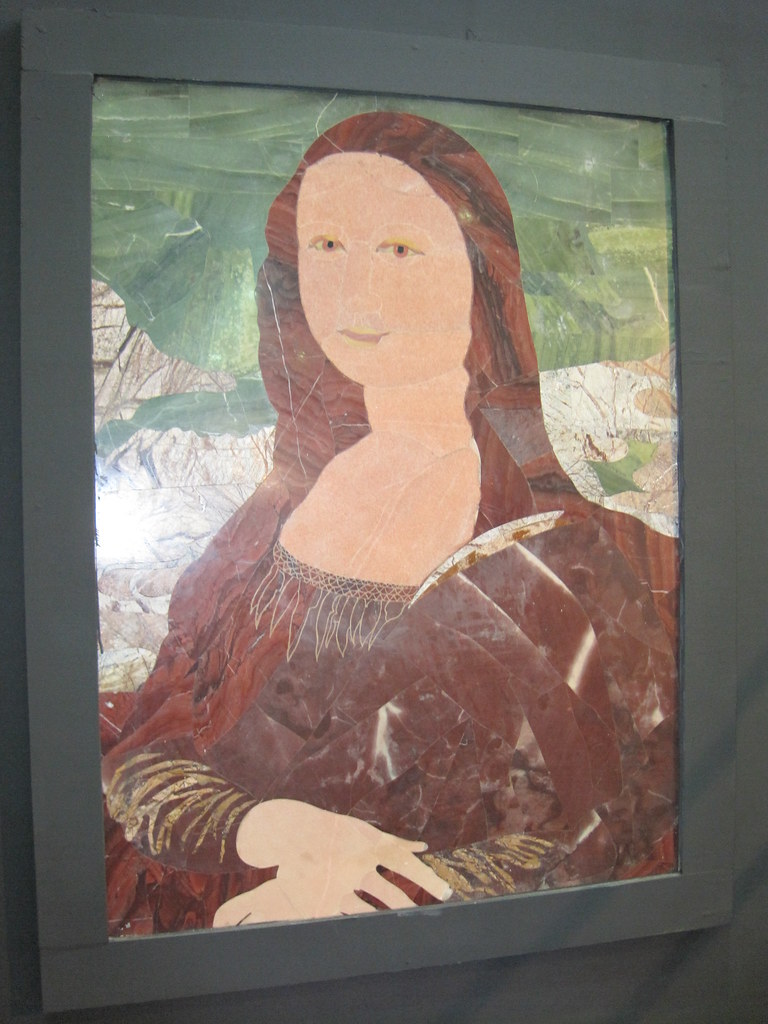 [credit](https://live.staticflickr.com/4141/4919011680_130db689c1_b.jpg), [licence](https://creativecommons.org/licenses/by-nc-sa/2.0/) It makes me think about my own journey as an artist, how different experiences and inspirations (which you can discover on my [timeline](/timeline)) come together to form a unique artistic voice. And if you're ever in the Netherlands, you could always stop by the [den-bosch-museum](/den-bosch-museum) for more art inspiration.  [credit](https://www.publicdomainpictures.net/pictures/280000/nahled/copyright-symbol-c.jpg), [licence](https://creativecommons.org/publicdomain/zero/1.0/) ## Mosaic in Architecture and Design: Seamless Integration Mosaics aren't just confined to galleries or standalone artworks; they have a rich and ongoing history of integration into architecture and interior design. From the stunning tiled facades of Barcelona's Modernista buildings (hello, Gaudí!) to contemporary subway stations and public fountains, mosaics add texture, color, and storytelling to built environments. They can define a space, create a focal point, or simply add a touch of unexpected beauty. I love how they transform mundane surfaces into canvases, turning a wall or a floor into an experience. The durability of tesserae makes them perfect for high-traffic areas, ensuring that these artistic statements endure as long as the structures they adorn. It's the ultimate fusion of art and utility, don't you think? 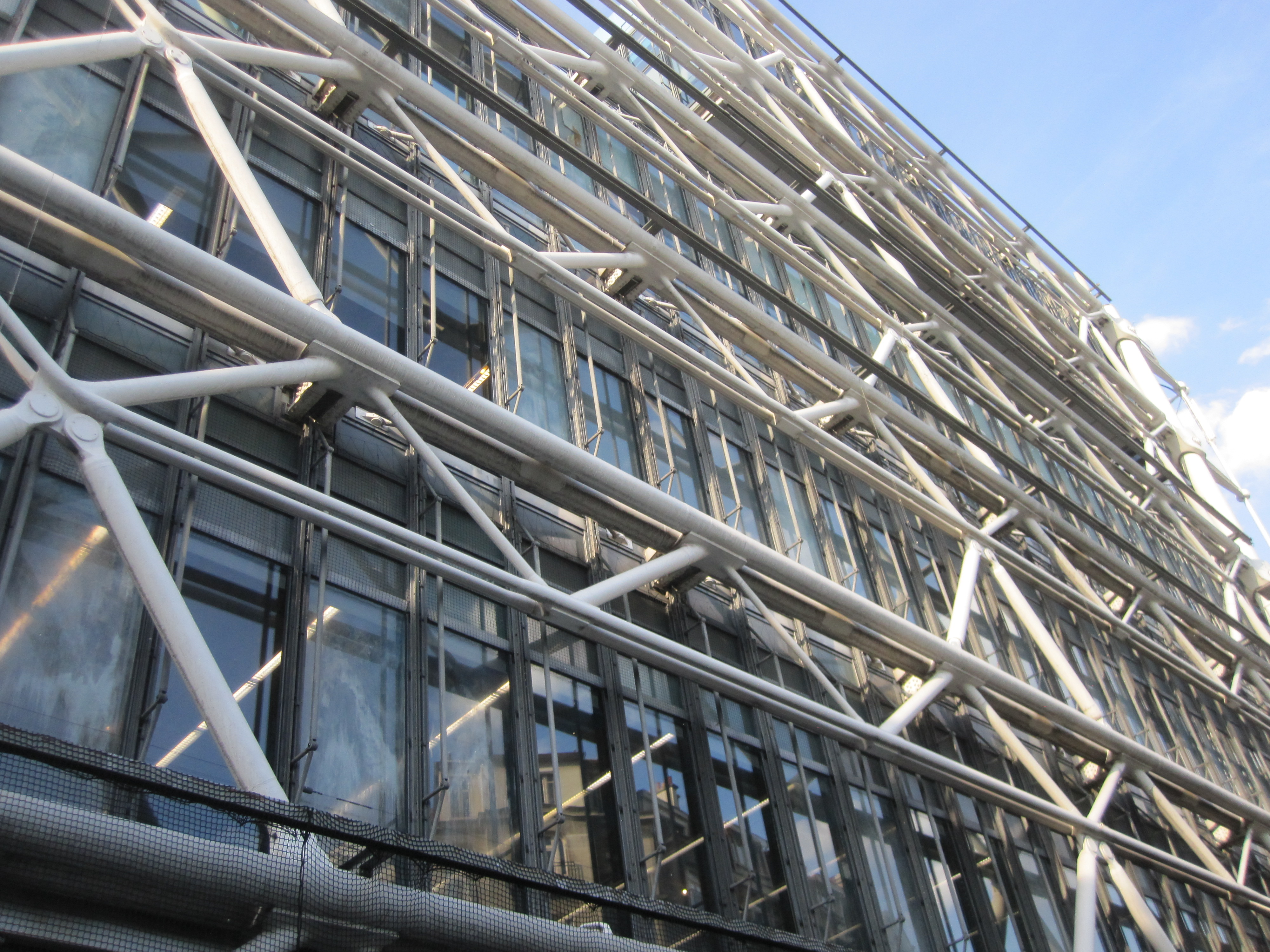 [credit](https://upload.wikimedia.org/wikipedia/commons/d/d1/Front_Fa%C3%A7ade_of_the_Centre_Pompidou_6.jpg), [licence](https://creativecommons.org/licenses/by-sa/4.0) ## FAQ: Your Burning Questions About Mosaic Art | Question | Answer | | :---------------------------- | :------------------------------------------------------------------------------------------------------------------------------------------------------------------------------------------------------------------- | | **What is the main material used in mosaics?** | Traditionally, mosaics use small pieces of stone, glass (smalti), ceramic, or shells, known as **tesserae**. Modern artists also incorporate found objects, mirrors, and various other materials. | | **What is Smalti?** | **Smalti** (singular: smalto) are a specific type of opaque, richly colored glass tesserae, often handmade and irregular in shape. They are known for their vibrant hues and light-reflecting qualities, especially when backed with gold or silver leaf, and were extensively used in Byzantine mosaics. | | **How old is mosaic art?** | Mosaic art dates back over 4,000 years, with some of the earliest examples found in Mesopotamia. It flourished in ancient Greece, the Roman Empire, and during the Byzantine period. | | **What is the difference between mosaic and stained glass?** | While both use colored glass, **mosaic** pieces (tesserae) are typically opaque and adhered to a solid backing, forming an image. **Stained glass** pieces are translucent, joined by lead or copper foil, and allow light to pass *through* them. | | **Can I make mosaic art myself?** | Absolutely! Mosaic art is a fantastic hobby for beginners. Start with a simple design, readily available materials like broken tiles or craft glass, a suitable adhesive, and grout. There are many online tutorials to guide you. | | **Is mosaic art difficult to learn?** | The basics are relatively easy to grasp, but mastering techniques like **andamento** (the flow of tesserae) and achieving intricate details requires patience, practice, and a keen eye. Like any art form, it's a journey. | | **What is the difference between direct and indirect mosaic methods?** | The **direct method** involves applying tesserae directly to the final surface, allowing for immediate artistic control and varied texture. The **indirect method** involves creating the mosaic face-down on a temporary backing before transferring it to the final substrate, offering greater precision and uniformity, especially for large projects. | | **How are mosaic tesserae cut?** | Tesserae are commonly cut using **wheeled nippers**, which are specialized pliers designed to cleanly snap glass or ceramic tiles. For stone, a hammer and hardie (a small chisel set into a wooden block) are traditional tools, allowing for precise shaping. | | **Can mosaics be used outdoors?** | Absolutely! Many ancient and modern mosaics are designed for exterior use, using durable materials like natural stone, porcelain, or frost-proof glass, along with weather-resistant adhesives and grouts, to withstand elements like rain, sun, and temperature changes. Public art often features outdoor mosaics. | | **What are some famous mosaic artworks?** | Some iconic examples include the mosaics of Ravenna, Italy (e.g., San Vitale Basilica), the floors of Pompeii, the Dome of the Rock in Jerusalem, the Great Mosque of Damascus, and Antoni Gaudí's fantastical mosaic work in Park Güell, Barcelona. These range from ancient religious narratives to modern architectural marvels. | ## Conclusion: The Enduring Power of the Fragmented Whole When I think about mosaic art, it’s not just the final image that captures me, but the journey of each tiny piece. Each tessera, no matter how small or seemingly insignificant, plays a vital role in creating a cohesive, impactful whole. It's a powerful metaphor for connection, for resilience, and for the incredible beauty that can emerge when fragments come together with intention. It reminds me that every small contribution matters.  [credit](https://live.staticflickr.com/5149/5593780004_61287a786a_b.jpg), [licence](https://creativecommons.org/licenses/by-nc/2.0/) So, next time you see a mosaic, don't just glance. Lean in, appreciate the individual pieces, and then step back to admire the grand vision. It's truly a timeless art form, and one I deeply admire. It’s a quiet testament to human ingenuity, the enduring desire to create beauty from brokenness, and the incredible power of small, intentional acts to create something monumental and lasting. It’s a reminder that every fragment matters, and every contribution, however small, can build towards a magnificent whole. What a profound thought, right? And what a journey we've taken through the world of mosaics!




